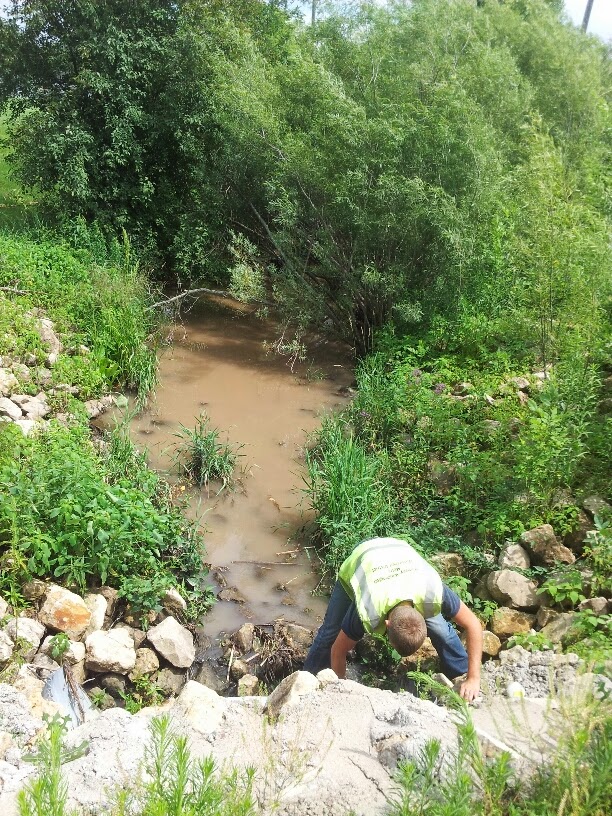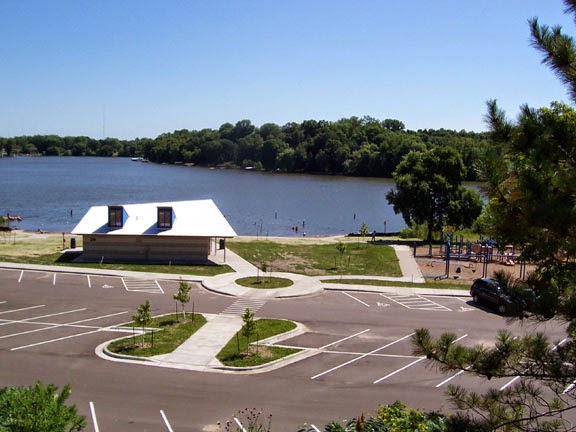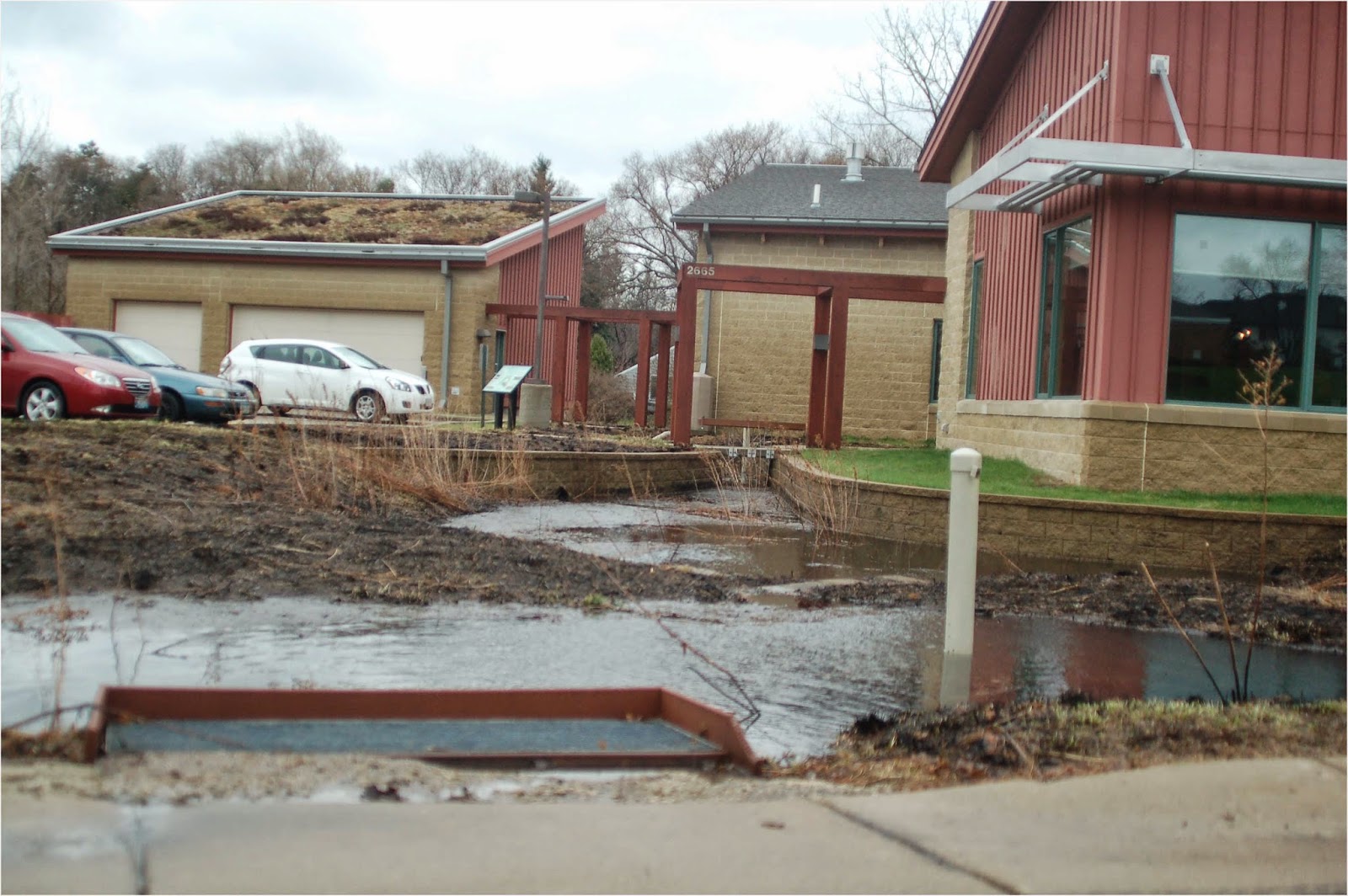By Cliff Aichinger
 |
| Water Quality intern, Wyatt, collects a water sample at the Casey Lake inlet. |
Many of you have heard or read about the sewage spills or by-pass pumping that occurred in several locations around the Twin Cities on June 19th. One of these sites was in the City of North St. Paul near McKnight and South Avenue. Is this type of incident a threat to our surface waters? Yes. Is this a new threat? In recent years, our Metropolitan Environmental Services wastewater system has eliminated almost all wastewater discharges to our surface waters; even to the Mississippi River. Discharges to our lake(s) and stream(s) used to be common before a metropolitan collection and treatment system. We have grown comfortable in the knowledge that our sanitary and storm sewer systems are separate and don’t mix. This is not the case in many large urban areas across the country. As discussed below, this is preventable and shouldn’t continue to occur.
Due to sewer back-ups in a number of homes, the City of North St. Paul felt it needed to relieve some of the pressure and excess flow in the sewer interceptor line as it runs through the city. This obviously created quite a stir of concern over public safety. Residents on our Phalen Chain of Lakes and users of the lakes for boating, swimming and fishing were left wondering if it was safe to enter the water.
District staff was concerned as well and provided monitoring assistance to determine if we had unsafe levels of E. coli in our waters. Unfortunately, we found out that we could not get a quick answer to this question. Lab analysis of water samples for E. coli takes 36 hours to process. We sampled every day for one week. The City and the District gave notice to as many people and information outlets as we could, but this still did not reach everyone. We took a cautionary position and asked the County to close Gervais Beach, which they did.
 |
| As a precaution, Gervais Beach was closed as a result of the upstream sewage by-pass. |
We did learn that the wastewater pumped to Kohlman Creek was highly diluted and became more diluted as it flowed toward Kohlman Lake. As it turned out, the E. coli levels bounced in the creek about a day after the discharge, but the lake readings never exceeded the health advisory levels.
As I told many people, this was a highly unusual situation. In fact, this was the first known sewage discharge or spill since the formation of the District in 1975. The excess flow in the sewer interceptor was clearly caused by stormwater and groundwater getting into the sewers. This is called I & I (Infiltration and Inflow). The Metropolitan Environmental Services, operators of our regional sewage treatment system interceptor pipes and treatment plants, have gone to great lengths to try to eliminate I & I by working with the metropolitan cities to repair old leaking pipes and to eliminate sump pump discharges to the sanitary system. This past spring and June rainfall created an unusually high ground water situation that resulted in a great deal of wet and flooded basements. These conditions resulted in unusually high amounts of basement floor drain flows and illegal sump pump drainage to the sanitary system. High groundwater also results in more leaking into the sewer pipe through cracks and joints.
.jpg) |
Heavy spring rains flooded the District office's rain gardens.
All of this water was able to infiltrate into the ground rather than
flow to the already-swollen Gervais Creek. |
The amount of rainfall we had this past June indicates that there needs to be continued effort to eliminate I & I if we are to prevent future contamination issues in our surface waters. We have worked too hard to improve our lakes and streams to have this work reversed by a preventable problem. This calls for individual homeowner action as well as action by our communities to repair and maintain their sanitary pipes and homeowner connections.
One final note, we shouldn’t be quick to criticize the City of North St. Paul. The sewage load in the sanitary interceptor was not only from North St. Paul, but also cities to the northeast including White Bear Lake, Mahtomedi and others. The over capacity situation was first experienced in North St. Paul. They were responding to an immanent public health emergency for their residents.
A great article was written by the Editorial Board at the Minneapolis Star Tribune on July 3. The link is below. This article speaks to the issue of preventing these discharges in the future. It is another great example of the role that we, as residents of our watersheds, play in protecting our water resources.
Here is another link to an article written by the Metropolitan Council about stormwater in our wastewater system and a link to the whole issue of I & I.

.jpg)






.jpg)











